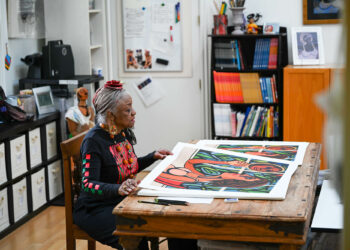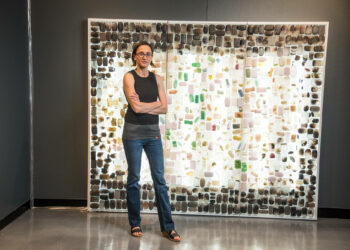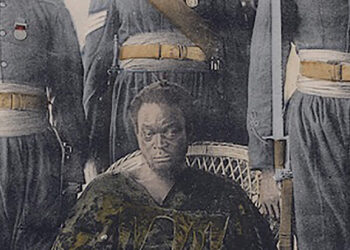ART AFRICA, issue 15, March 2019
We are off to an exciting start this year as we attend the seventh edition of the Investec Cape Town Art Fair (ICTAF). It is a time for ART AFRICA to catch up with the many participating galleries and artists from Africa and its diaspora and meet some new friends too. One, in particular, is Michael Cook, the Australian Aboriginal artist whose work is showcased on the cover of our special edition supplement for the ICTAF. Filled with interviews from participating galleries and artists from Africa and further abroad, we are sure you will thoroughly enjoy this offering. It was the TOMORROWS/TODAY section of the ICTAF, curated by Tumelo Mosaka, that inspired the title for this edition of the magazine. As Mosaka states, TOMORROWS/TODAY flips the script by acknowledging ten artists that have traditionally gone unrecognised, providing a significant platform where the art community can meaningfully engage with and support emerging artists working at the edge of the spotlight.” For ART AFRICA this is an exciting prospect, and we are sure that the public will look forward to what the latest edition of the ICTAF has to offer.
 Michael Cook, Undiscovered 8, 2010. Inkjet print on cotton rag, 124 x 100cm. Courtesy of the artist & This Is No Fantasy.
Michael Cook, Undiscovered 8, 2010. Inkjet print on cotton rag, 124 x 100cm. Courtesy of the artist & This Is No Fantasy.
TOMORROWS/TODAY proposes many possibilities, and in this context, ART AFRICA asks: Where does contemporary art from Africa finds itself in the world today? We travel from Kochi to Oaxaca, Cape Town to Dubai, Marrakech and back to explore this proposition.
 Durgabai and Subhash Vyam, installation view with crowds at Kochi-Muziris Biennale 2018. Courtesy of Kochi Biennale Foundation.
Durgabai and Subhash Vyam, installation view with crowds at Kochi-Muziris Biennale 2018. Courtesy of Kochi Biennale Foundation.
We look at the fourth edition of the Kochi-Muziris Biennale, marked by a significant shift in the curatorial model and process adopted by curator Anita Dube. Dube, the first woman to curate the Biennale, was a member of the Indian Radical Painters and Sculptors Association in the 1980s, and this year’s curatorial theme, ‘Possibilities for a Non-Alienated Life’ reflects her political energy. At a breakfast talk before the opening of the biennale, when asked what her singular wish for the art world would be, Dube exclaimed to the audience “Give it to the women!”
Under Dube’s guidance, the Kochi-Muziris Biennale also delivered an extensive programme of youth-focused activities underlining the importance of not only looking at established artists of TODAY but urging us to look to TOMORROW by investing in our youth.
 Sharjah Biennale 14. Courtesy of the Sharjah Art Foundation.
Sharjah Biennale 14. Courtesy of the Sharjah Art Foundation.
Another biennale highlight is the upcoming Sharjah Biennale led by Sharjah Art Foundation President and Director Hoor Al Qasimi. In this issue, we offer a preview of what is to come. Titled ‘Leaving the Echo Chamber’, under the guidance of curators Zoe Butt, Omar Kholeif and Claire Tancons, they explore the possibilities and purpose of producing art when news is fed by a monopoly of sources, history is increasingly fictionalised, when ideas of ‘society’ are invariably displaced, and when borders and beliefs are dictated by cultural, social and political systems. ART AFRICA looks forward to visiting Dubai and Sharjah in March. In our June issue, we’ll report on how artists from Africa and the diaspora are making an impact at the Sharjah Biennale, Art Dubai and elsewhere in the Middle East.
 ‘Hacer Noche/Crossing Night’, wallpaper at the entrance to the exhibition with logo designed by Peet Pienaar.
‘Hacer Noche/Crossing Night’, wallpaper at the entrance to the exhibition with logo designed by Peet Pienaar.
Sean O’Toole travelled to Oaxaca in Mexico and provides his insight into the exhibition ‘Hacher Noche/Crossing Night’. The exhibition is an exploration of the correlation between Mexico and southern Africa’s shared colonial histories, introducing Mexican audiences to artists from Angola, South Africa and Zimbabwe. Themes explored range from death, “narco murders”, to economic prosperity. Conceived by Francisco Berzunza, a former Mexican cultural attaché to South Africa, ‘Crossing Night’, which comprised of five exhibitions, artists’ residencies, workshops and an eccentric if generally insightful symposium, is now part of this history of Afro-Mexican encounter.
 African Crossroads “The Fourth Industrial Revolution” panel discussion. Courtesy of Ayọ̀ Akínwándé.
African Crossroads “The Fourth Industrial Revolution” panel discussion. Courtesy of Ayọ̀ Akínwándé.
Ayọ̀ Akínwándé reports back on the inaugural ‘African Crossroads’ gathering in Marrakech. Themed “The Fourth Industrial Revolution”, the event brought together, what Akínwándé calls the ‘64-bit Africans’, future-oriented African thinkers and doers “who meet annually to engage and critically reflect on the most cutting-edge entrepreneurial, scientific, artistic and technological developments anchored in African intellectual and technological traditions”.
 Cristiano Mangovo, Alternativo, 2019. Acrylic on canvas, 160 x 180cm. Courtesy of the artist & This Is Not a White Cube.
Cristiano Mangovo, Alternativo, 2019. Acrylic on canvas, 160 x 180cm. Courtesy of the artist & This Is Not a White Cube.
These and many other events over the coming months will continue to illustrate the force that is contemporary African art TODAY and how artists from this continent and its diaspora are helping to change imposed perceptions by building the new Africa of TOMORROW.
Enjoy the issue!
– Suzette & Brendon Bell-Roberts



